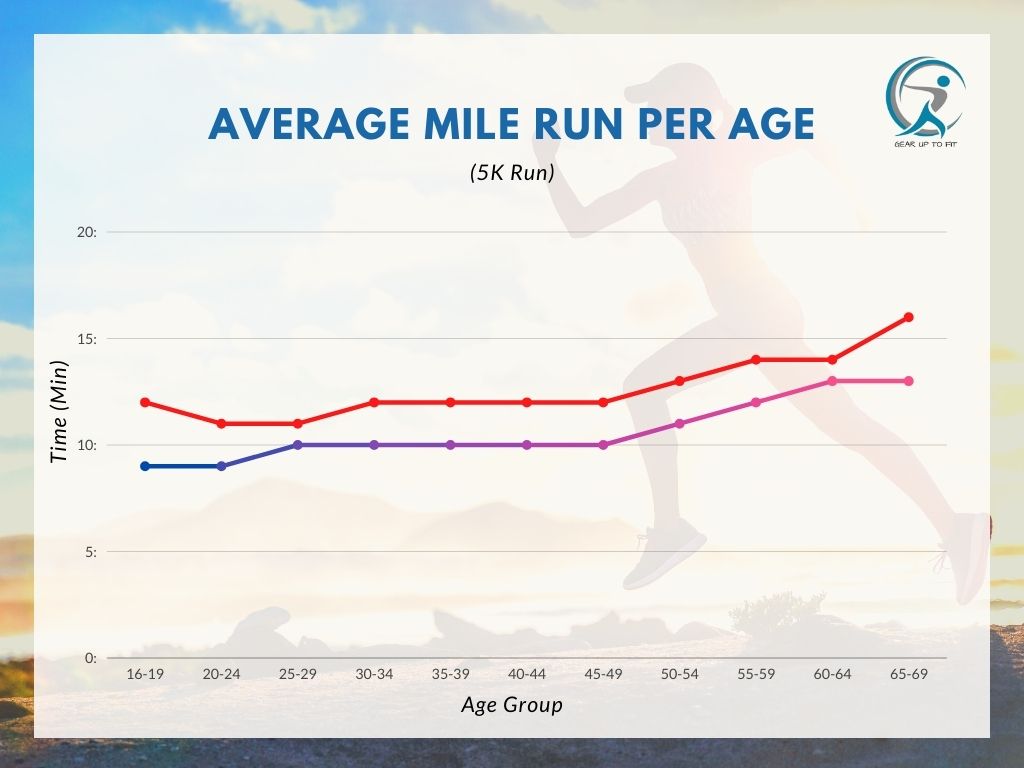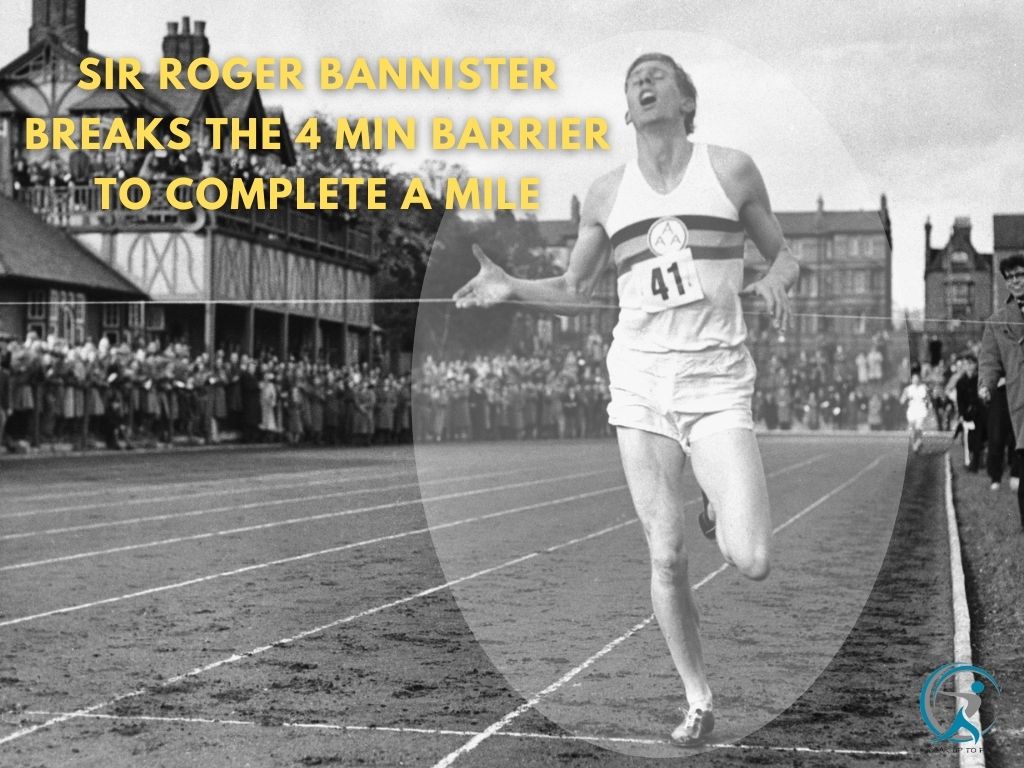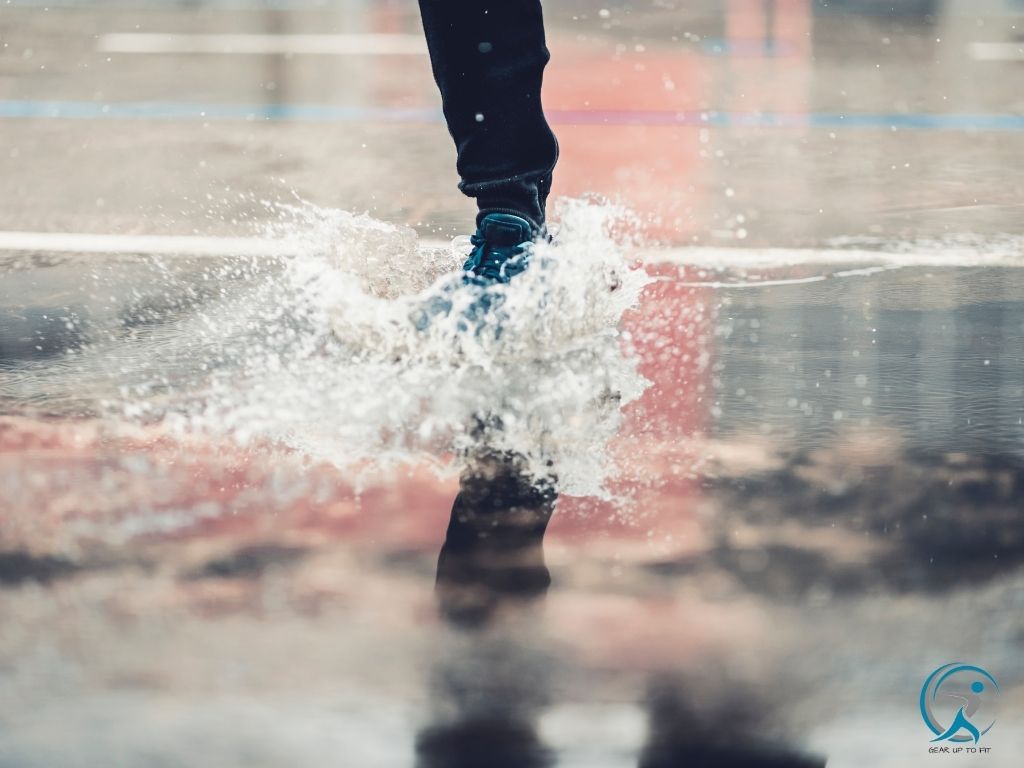Do you know how long it takes to run a mile? It depends on many factors such as your age, gender, height, weight, etc.
When I was younger, I thought that if I ran a mile in under 10 minutes, I must be doing something wrong. Nowadays, I don’t care how fast I am because I want to enjoy my runs and not worry about time. However, I still like to know what my average pace is, so I decided to research how long it takes to run a mile.
On average, an unfit person who runs for exercise at a moderate pace (say, 6 miles per hour) would complete one mile in approximately 12 minutes. Elite marathon runners run a mile at an average pace of 4 to 5 mins.
How long does it take to run a mile
If you are looking to get into running, then you should probably start by trying to run a mile. This is a great way to see how far you can go and what kind of pace you can maintain. It also helps you figure out if you like running or not. You don’t need any fancy equipment to do this either. Just wear comfortable clothes and sneakers that fit well.
Running a mile is considered one of the most challenging sports activities. It takes a lot of practice to get it down. But if you want to run a mile in less than eight minutes, here’s what you need to know…
This article will cover a few things that will help you improve your running speed.
Average time for a milage run
It all depends on the runner, but generally speaking, the average mile time falls between 10 and 15 minutes. As you can see, even the fastest runners have a wide range of times on average, so don’t feel bad if your time isn’t super fast.
Running a mile in under 10 minutes is pretty good going for the average person.
If you are already a regular runner and can do a 1-mile run in under 8 minutes, then that’s awesome – keep up the good work!
The International Association of Athletics Federations (IAAF) defines an elite athlete as someone who has run a mile in 3 minutes and 30 seconds. A good time would be under 5 minutes, but not everyone is running to win. The average runner will finish a 10K race in 50 to 70 minutes or about 9 to 12-minute miles.
The Mile is an imperial system distance unit. The symbol is “mi.” The International mile is exactly 1.609344 kilometers (km).
How fast is 7 miles an hour?
A mile is 1,609 meters. Running a mile in 8 minutes requires running at a pace of 7 miles per hour or 4.5 meters per second. To run a mile in 8 minutes, you need to maintain a continuous running pace of 7 miles per hour.
How long is a mile?
A mile is a unit of length. It’s an actual distance, but it can be hard to visualize since it’s an Imperial measurement. A mile is shorter than a kilometer. A mile is equal to about 1.6 kilometers, or 5280 feet. It takes about 10 minutes to walk one mile at a slow pace.
It used to be that people walked everywhere. The word “mile” comes from the Latin word “mille,” which means “thousand.” The Romans would use a thousand paces as a rough distance measurement when they traveled around their empire.
However, miles are not as relevant today as they once were — outside the US, Canada, and the UK, few countries use miles as distance units.
How fast is a good time for a mile?
You have to define what a good time is. For most people, it’s not important how long it takes you to run the mile. It’s more important what you can do with the time you have.
The fastest humans can run a mile in less than 4 minutes. That’s some 150 seconds or so. The world record is 3:43.13 by Hicham El Guerrouj of Morocco.
Most people can’t run a mile in less than 4 minutes, and it might be an impossible feat for some. Does that make them worse athletes? Of course not!
Running a mile (or any distance) is not about the time but the effort. If you can run the mile in 10 minutes and 30 seconds, but your friend needs 12 minutes for that distance, then your friend is slower than you are. But if both of you can run a half marathon in 1 hour 45 minutes, then neither of you is faster than the other.
So when someone asks me how fast is a good time for a mile, I always answer: “It doesn’t matter.” What matters is what else you can do with the time you have.
Average mile pace
The average mile pace for a runner is a little over 9 minutes, but that can vary greatly depending on many factors. For example, the average mile time for a man in good shape is around 8:30, while the average for women of the same fitness level would be 10:30.
As you might expect, the world’s top marathoners have an average finish time of around 2 hours — that’s a moderate mile pace of just under 5 minutes. But it takes an immense amount of training and experience to get to this level.
10 minute mile
A 10-minute mile is also good for beginners; the pace is easily attainable for most people. It’s a slower pace than more advanced runners typically train at, but it can still give you a solid workout. You can certainly run a 10-minute mile regularly and expect to get stronger.
There are several benefits of running a 10-minute mile or slower:
You will build endurance so you can run or walk long distances.
You will burn more calories per mile.
Your risk of injury decreases compared to faster miles.
How fast should i walk a mile for my age
The general answer to this question is that the average person walks a mile in about 16 minutes or four miles per hour. I know that sounds incredibly slow, but if you are new to walking and have not exercised for some time, you need to start slowly and build up your fitness over time.
Walking is an excellent way of getting fit and burning calories. A brisk walk is classed as around three and a half miles per hour or 20 minutes per mile. So if you want to know how fast you should walk a mile, all you need to do is multiply your age by 3.5.
Don’t worry if this sounds too slow because it’s better to start slowly than go too hard and end up not able to complete the task due to exhaustion or injury. Once you have completed a few weeks of walking at your own pace (perhaps with a friend), try adding some speed walking intervals to increase your speed and heart rate.
Try walking at a brisk pace, about 3.5 miles per hour (mph). If you find that too difficult, start with slower speeds and build up your endurance. Walking a mile under 20 minutes may be more appropriate for beginners because it has a slower pace and is less intense.
Interesting facts about running a mile
- A person who weighs 130 pounds will cover 1 mile in 4 minutes and 40 seconds.
- A person who weighs 200 pounds will cover 1 mile at an average speed of 5 mph.
- For every pound lost during exercise, your running time increases by one minute and four seconds.
- The first half-mile of any race is always slower than the second half.
- If you jog for 20 miles per week, you can expect to lose 2 pounds per week.
- In order to increase your running speed, you need to practice running faster intervals between 10 and 30 seconds.
- Running uphill requires more energy than running downhill.
- Your breathing rate doubles when you’re running.
- When you run, your heart beats approximately 100 times each minute.
- You should drink 16 ounces of water before exercising.
- After you have finished exercising, you should cool down gradually by walking or jogging slowly until your pulse returns back to normal.
Back on time

Once upon a time, it was hard to run a mile. For most people, the challenge seemed impossible—a physical impossibility. In fact, in 1954, Roger Bannister, at age 25, became the first person to break through this barrier and complete a mile in less than four minutes (3:59.4). Many doctors said his feat was impossible because it would cause him irreparable harm. But he proved them wrong not only by running that distance with no ill effects but also by setting an even faster record of 3:59 just one year later. Nowadays, most high schoolers can do it without breaking much of a sweat!
So how long does it take to run a mile?
A fit, healthy, and noncompetitive athlete typically complete a mile in 7-9 minutes.
If you’re a beginner at running, you could be able to complete one mile in close to 12-15 minutes as you increase your endurance.
Of course, there are plenty of people who can do it much faster than that and plenty of people who can do it slower. But this is a good ballpark figure to start with.
Marathon runners who are elite runners an average of 4-5 minutes. The current record in the world for a mile is 3:43.13, which Hicham El Guerrouj recorded from Morocco in 1999.
Don’t worry too much about how long it takes you to run a mile if you’re starting. Just focus on gradually increasing your speed until you can complete the distance in under nine minutes. And if you’re already an experienced runner, try to see if you can shave a few seconds off your time!
Factors of Running Time
How fast you’ll run a mile will depend on various factors, including your gender, age, fitness level, gender, and genetics.
This is because you require endurance to finish the race. The speed you run depends on the speed and total distance you’re trying to finish.
Mile times by age

Age is a factor in the speed you can run. Most runners will reach their peak speed between 18 to 30. The average speed of running per mile during the five-kilometer race (5-kilometer (or 3.1-mile event) is lower than.
A data analysis study examining 10,000 runners who ran the 5K revealed that the mean time per mile among runners of different age groups was 11:47.
Male runners from the 16-19 years old age bracket ran the race at an average speed of 9.34.
Females from the same age bracket finished at 12:09.
The time increased gradually as the population was getting older.
Here’s a graph showing the average running speed per mile during the five-kilometer race (from the same source).
Average Mile Run Time for each age group (5K Run)
| Age | Men (minutes per mile) | Women (minutes per mile) |
| 16-19 | 9:34 | 12:09 |
| 20-24 | 9:30 | 11:44 |
| 25-29 | 10:03 | 11:42 |
| 30-34 | 10:09 | 12:29 |
| 35-39 | 10:53 | 12:03 |
| 40-44 | 10:28 | 12:24 |
| 45-49 | 10:43 | 12:41 |
| 50-54 | 11:08 | 13:20 |
| 55-59 | 12:08 | 14:37 |
| 60-64 | 13:05 | 14:47 |
| 65-99 | 13:52 | 16:12 |
This information was gathered from the United States in 2010 and is based on times for 10,000 athletes.

Gender
The gender of the person affects how long it does take to run a mile.
Men tend to be faster runners than women. However, men also tend to have higher body fat percentages than women. Thus, men burn more calories per minute than women when running at the same pace. This means that men will need to exercise for longer periods to achieve the same calorie-burning as women.
The difference in speed could be from the muscle mass.
The general rule is that having faster-twitch muscles within the lower part of the body enhances running speed. In contrast, having slower twitch muscle fibers in the upper part of the body enhances endurance.
This can be seen by examining a sprint athlete like Usain Bolt, who has fast-twitch muscles throughout his legs and torso. On the other hand, an endurance athlete like Kenenisa Bekele, who has slow-twitch muscle fibers in his thighs, would have to work harder for longer periods before running as fast.
However, there are exceptions to this rule. For example, some people with specific genetic mutations may have fast-twitch muscles in their lower parts but not their upperparts. This means they will sprint more quickly than others without any training. However, once these athletes get into better shape, they will no longer have the difference between their upper and lower parts.
Furthermore, it is possible to improve on someone else’s natural ability. For example, if you were born with very long arms or legs, you could train yourself to become much stronger and faster by exercising those areas.

Exercise Level
Although gender and age aren’t your responsibility, you have plenty of control over your fitness levels.
Studies show that runners are less elite but generally in good shape and can complete one mile in 9-10 minutes.
If you’re beginning to take up running, you may be able to complete 1 mile in 12-15 minutes. As you increase endurance, you improve your ability to run.
Outdoor Conditions

Temperature and weather can influence the way you exercise. If it’s too hot, your body will work harder to cool down. But if it’s too cold, you may not be able to move as freely or comfortably.
To help you find a comfortable temperature for exercising in any season, we asked our experts what they recommend. They shared their top tips on how to stay warm and fit no matter what the weather is doing outside.
If it’s cold outside, you could run faster than when it is higher.
The same thing applies to your brain: if you’re in a hot environment, your brain will be more active and alert; in a cold climate, your brain will slow down and become less active. You might feel tired after a long day at work or school.
This effect can also explain why people sleep better on colder nights. Our brains use energy to stay awake, so when the weather gets cooler, they’ll need less energy. They’ll therefore start to shut down sooner and slip into slumber sooner.
It’s not just about your body, though. Your mind plays a role too. When the temperature drops, you’ll find yourself thinking more clearly and being able to focus more easily. You’ll have fewer distractions from thoughts and ideas – which means you’ll be able to think more deeply and creatively.
Overall the ideal temperature for running lies in 50 to 56 degrees, with no winds and no rain.
Average Mile Time And Elite Runners
An elite-level runner can run in a mile for around 4-5 minutes. A perfect runner, who is not an elite runner, can run the same distance in about 6 minutes.
The difference between these two times is that the elite runner has trained for years and developed their body to run at this pace. The non-elite runner has just started running recently and has only been training for months. In other words, the elite runner has had more time to develop their bodies while the non-elite runner hasn’t had enough time to do it.
So what does this mean? It means that there are ways for you to get faster than your current speed. You don’t have to spend hours training as the elite runners do. All you need to do is start running regularly and build up your endurance gradually.
Average miles per mile for men and women
Gender differences among runners affect their ability to run at different paces. However, at longer distances, women could benefit. A large study by Trusted Source discovered that non-elite males are more likely to be slowed down than females in a marathon race. Down their speed throughout the race. Researchers believe it could be due to physiological or decisions made by males and females.
Pacing for distance running
Pace matters when you’re running for long distances.
Running for long distances requires lots of energy so if you want to save some energy, take these tips into account when training for marathons.
To determine your average mile-per-mile pace, you can try this exercise test: Sketch out 1 mile on a flat area near your house or finish the course by using a track within your neighborhood.
Get ready for 5-10 minutes. You can track your time while you run for one mile. Make a plan to run at the pace you are pushing yourself, but don’t run at full speed.
Using this mile’s duration to set a goal for speed in your workout is possible. You can return to the one-mile circuit every couple of weeks and then do the same mile in the timed format when you’ve gotten faster and more endurance.
How to Improve your Running Time? Through proper training.
The key to improving your speed lies in building up endurance. If you have ever done anything athletic before, you know that you build endurance over time. So if you want to run a mile quickly, you need to build up your endurance. To do this, you need to train regularly. That means doing some exercise every day.
You can choose from different exercises depending on what type of fitness you are after. Some examples include jogging, swimming, cycling, walking, rowing, weightlifting, etc. Whatever you decide to do, make sure to do it consistently.
To keep yourself motivated, you might consider setting a goal. Maybe you want to beat your previous best time? Or perhaps you want to run a certain amount of miles per week? Whatever it may be, once you’ve decided on a goal, you’ll find that it becomes easier to stick to your plan.
When running a mile, you’re essentially running around a track. You can use this knowledge to your advantage. Instead of taking the same route each time, change it up. Try running clockwise instead of counter-clockwise. This will help you to stay more alert while running.
But remember, you still need to maintain a steady pace. Don’t get distracted by other runners or cars driving past. Keep focused on your progress.
If you follow these tips and techniques, you could very soon be able to run a mile in under six minutes.
How to Increase the Speed of Your Run
Whatever the current speed of your mile, there are a variety of things you can take on right now to increase your speed and obtain more outcomes.
Here are some ideas:
- Begin slow. If you’ve zero running experience, you shouldn’t attempt to run a mile in as fast as possible. You may not finish the race. Instead, set your goal to run a mile and not stop.
- Gradually increase your speed. Respect the 10 percent rule. Increase your daily mileage by not more than 10 percent from week to the following week.
- Make sure you’re ready. Start every run with a solid 10 minutes warm-up and complete another 10 minutes to cool down.
- Be safe. Don’t wear headphones while you run on the roads. Keep your eyes open. Run against traffic. Follow the rules of the road.
- Drink plenty of water. Stay well hydrated by drinking plenty of fluids throughout the day and not just during your runs.
- Make sure you have the correct sneakers for running. Head to your local running shop and ask the staff for advice on choosing the right pair to match your style and goals.
- Try other distances. The best way to increase your body’s endurance and increase speed to run running the mile is to do longer distances as part of your running program.
- In general, you should make some of the weekly runs longer than the others.
- Well-rounded training. Perform various exercises for running such as simple runs, lengthy runs, Fartlek, intervals, and long and easy runs.
- Enhance your mileage on the road. Cross-train at least every two weeks. I’d suggest strengthening exercises along with yoga to help keep muscles stimulated and flexible.
- Keep it steady. That’s the only way to continue getting better every day.
Conclusion
Regardless of your experience level, running a mile is always a challenging and rewarding feat. And once you’ve completed that distance, there’s an infinite number of longer and more challenging runs out for you to try next!
FAQ
Run a fast mile by running at an average pace for 1 minute, then sprinting for 30 seconds, followed by a slow jog for 2 minutes. Repeat this process until you reach your desired distance.
The average time of a mile is 5 minutes and 23 seconds.
Running a long distance can be beneficial if it helps you run faster at shorter distances.
The fastest mile time is 3 minutes and 58 seconds.
New runners can expect to complete a mile in about 10 minutes.
Yes! In fact, I am a beginner runner myself and I can tell you that it is definitely possible to run a mile under ten minutes. You just need to be patient and consistent with your training.
In general, you can expect to burn 100 calories for every mile you run. This number may vary depending on your weight and running speed.
The number of calories burned while running varies depending on a person’s weight, intensity level, and running speed. Generally, someone who weighs 150 pounds will burn approximately 100 calories per mile run.
In general, there are about 1,500 to 2,000 running steps in a mile. This number may vary depending on your stride length.
As a veteran fitness technology innovator and the founder of GearUpToFit.com, Alex Papaioannou stands at the intersection of health science and artificial intelligence. With over a decade of specialized experience in digital wellness solutions, he’s transforming how people approach their fitness journey through data-driven methodologies.
